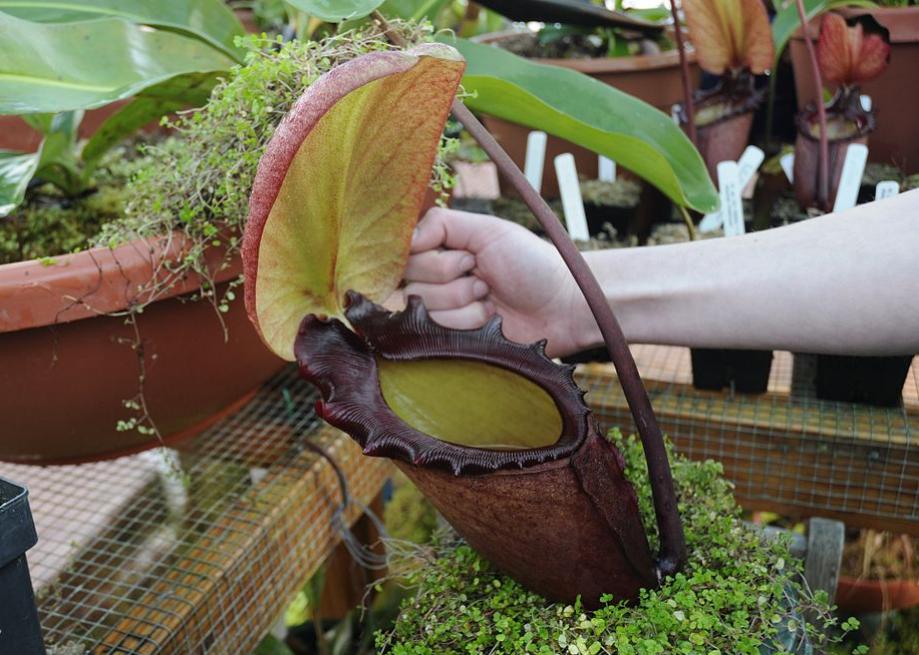Nepenthes Rajah: The Big Carnivorous Plant that Just Wants to Eat Poop
Atlas Obscura on Slate is a blog about the world's hidden wonders. Like us on Facebook, Tumblr, or follow us on Twitter @atlasobscura.
Deep in the forests of Malaysian Borneo lurks a most peculiar plant. First recorded in 1859, Nepenthes rajah is the largest of the pitcher plants. These carnivorous wonders feature liquid-filled cavities that lure and trap insects.
Ants are the preferred cuisine of the Nepenthes rajah, but the plant has been known to trap much larger organisms in its urn-shaped cavity. Rats, frogs, lizards, and birds have all been found in the rajah's sticky grasp.
Rat-eating plants make for fascinating botanical fodder, but Nepenthes rajah's considerable dimensions—the largest recorded urn can hold almost a gallon of water—probably aren't meant for trapping rodents.
In 2011, a team of scientists lead by Monash University carnivorous plant expert Dr. Charles Clarke published their findings after studying interactions between tree shrews, rats, and N. rajah. The report's main discovery was that these small mammals habitually landed on the rim of the plant and fed on nectar from the lid while defecating into the urn. Nepenthes rajah was their food source and toilet rolled into one. And that suited N. rajah just fine—the rat and tree shrew poop provided the plant with valuable nitrogen.
As a result of this study, it is now thought that Nepenthes rajah may have evolved to accommodate the feeding-and-pooping behavior of the tree shrews. The distance from the front rim of the pitcher to the nectar on the lid corresponds to the length of the tree shrew's body, allowing it to dine and defecate simultaneously in comfort. It's a heart-warming example of a plant and animal living in perfect harmony.
Other peculiar plants:
View Mesilau Nature Resort in a larger map


